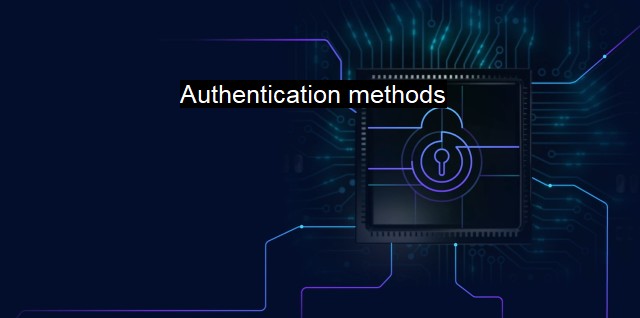What are Authentication methods?
Exploring Authentication Methods in Cybersecurity and Antivirus Solutions: Passwords, Biometrics, Single Sign-On and More
Authentication methods are critical aspects of cybersecurity infrastructure, protocols, and regulations. They refer to the process used to confirm the identity of users, computers, and systems in an IT environment. Such processes reduce the risk of unauthorized access and ensure that only the valid or intended users have actual access to secured resources or systems, thereby achieve security and confidentiality. There are three main types of authentication methods including passwords, tokens, and biometrics. Each offers a unique approach to validating identities and securing data.The first, and arguably the most widely used, is authentication through a knowledge-based system: passwords. A password is a secret word or string of characters used for user authentication to prove identity or gain access to a resource. The password is kept secret from those not allowed access, and those wishing to gain access are tested on whether they know the password and are therefore authorized to proceed. Typically, the user is asked to create a password during the setup process that has a mix of alphanumeric characters. With a correct password, the user is given access to the system or resource. passwords can be captured, guessed, or stolen, increasing the risk of unauthorized access. Therefore, it also necessitates considering ways to make passwords hard to crack, change them regularly, and discourage their sharing.
Tokens, the second category of authentication methods, present an entirely different form of validation. They provide a tangible object that facilitates user authentication, which could occasionally be in soft form. Tokens represent two-factor authentication, augmenting the password authentication. An excellent example is a smart card or fob that generates a timed interval authorization code. Other examples include OTPs that act as a second-level password. Tokens add another layer of security because even if a malicious user manages to get the password, they are unlikely to have the token. Tokens can be lost or stolen, creating a window for potential abuse.
Lastly, biometrics plays a critical role in authentication. Biometric authentication refers to a range of measures functioning primarily on 'what the user is'. They use one's physical or behavioral characteristics to authenticate identity, such as face recognition, fingerprint scans, and iris recognition. Biometric methods are becoming increasingly popular given their uniqueness to each user, making them arguably more secure than knowledge-based or possession-based methods. In the modern digital landscape, smartphones and many computer systems are integrating some form of biometric technology. the challenge lies in the accuracy of the biometric readers and possible breaches where the biometric data is stored.
Some advanced systems even use multi-factor authentication for a fool-proof cybersecurity system wherein more than two authentication methods are integrated for added security. The user is authenticated only after successfully presenting two or more pieces of evidence to an authentication mechanism.
While authentication methods provide a robust security measure to safeguard confidentiality, integrity, and system availability from potential unauthorized access, the choice of method often depends on what level of security is sought, the value of information being protected, and the user's financial capabilities. The cybersecurity and antivirus landscapes are constantly evolving, and professionals in the field must stay updated about the latest trends and threats to develop more effective authentication systems that balance security, usability, and cost. Proper control procedures and protocols, regular audits, and continued education are other significant elements that would ensure the effectiveness and strength of these authentication systems in the long run.

Authentication methods FAQs
What is authentication in cybersecurity?
Authentication is the process of verifying the identity of a user or system before granting access to resources. In cybersecurity, authentication is used to ensure that only authorized users or systems can access sensitive data or networks.What are some common authentication methods?
Some common authentication methods include passwords, biometrics (such as fingerprints or facial recognition), smart cards, and two-factor authentication (which combines two or more methods, such as a password and a security token).Why is strong authentication important for antivirus software?
Strong authentication is important for antivirus software because it helps prevent unauthorized access, modification, or deletion of the software and its data. Without strong authentication, attackers could potentially bypass antivirus software and infect or damage a system undetected.What is the difference between authentication and authorization in cybersecurity?
Authentication is the process of verifying the identity of a user or system, while authorization is the process of granting or denying access to a resource based on a user's or system's verified identity. In other words, authentication is the gatekeeper that verifies who someone is, while authorization determines what that person is allowed to do or access.| | A | | | B | | | C | | | D | | | E | | | F | | | G | | | H | | | I | | | J | | | K | | | L | | | M | |
| | N | | | O | | | P | | | Q | | | R | | | S | | | T | | | U | | | V | | | W | | | X | | | Y | | | Z | |
| | 1 | | | 2 | | | 3 | | | 4 | | | 7 | | | 8 | | |||||||